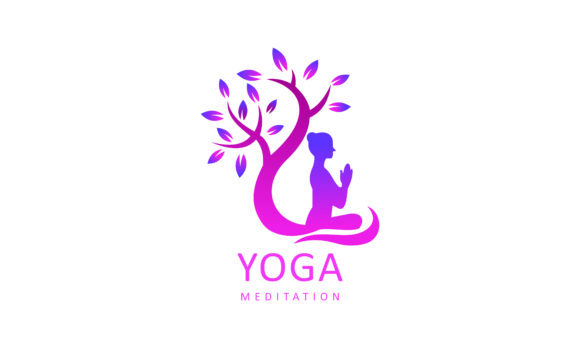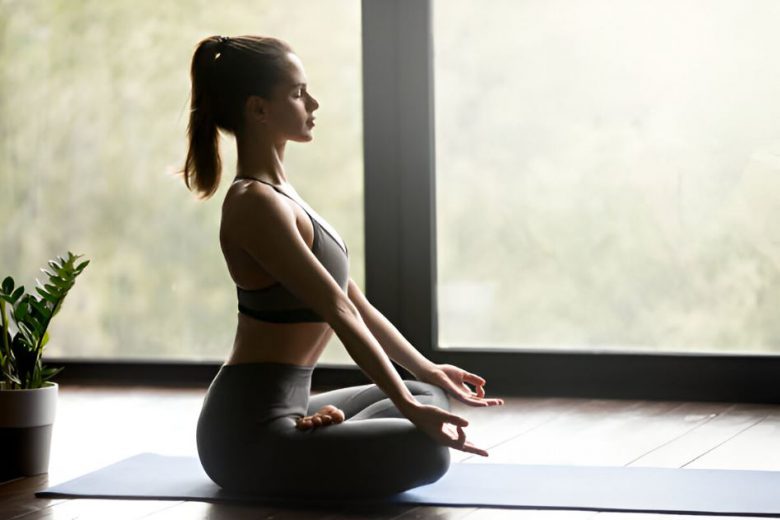Maintaining good posture is essential for overall health and well-being, yet many people struggle with bad posture due to long hours sitting at a desk, using smartphones, or simply not paying attention to their body alignment. Poor posture can lead to discomfort, pain, and long-term problems such as neck pain, back pain, and even respiratory issues. Yoga is an excellent remedy for bad posture, as it strengthens the muscles that support the spine, improves flexibility, and increases body awareness.
This article will explore the best yoga poses for correcting bad posture, helping you achieve proper alignment, and preventing future postural problems.
Why Yoga Helps Improve Posture
Yoga targets multiple areas of the body, including the spine, shoulders, core, and hips—all of which play a role in maintaining good posture. When you practice yoga regularly, you’ll notice improvements in how you stand, sit, and move, thanks to increased muscle strength and flexibility. Yoga also encourages mindfulness, which helps you become more aware of your body positioning throughout the day.
Benefits of Yoga for Bad Posture:
- Strengthens core muscles that support the spine.
- Improves spinal flexibility, reducing stiffness.
- Aligns the shoulders and opens the chest.
- Increases body awareness and mindfulness.
- Relieves tension in areas like the neck and lower back.
Top Yoga Poses for Correcting Bad Posture
1. Mountain Pose (Tadasana)
Mountain Pose may seem simple, but it is a powerful pose for improving posture. It teaches the body how to stand with proper alignment by engaging the muscles of the legs, core, and back.
How to Perform:
- Stand with your feet together, grounding them into the floor.
- Engage your thigh muscles, lift your kneecaps, and tuck in your tailbone slightly.
- Roll your shoulders back and down, and lift the crown of your head toward the ceiling.
- Hold the pose for 5-8 breaths, focusing on standing tall.
Benefits:
- Teaches proper standing alignment.
- Strengthens the legs and core.
- Increases body awareness.
2. Cat-Cow Pose (Marjaryasana-Bitilasana)
Cat-Cow Pose is a gentle flow that stretches and mobilizes the spine, helping to release tension and improve flexibility. This pose is great for aligning the spine and is especially helpful for those with rounded shoulders or a hunched back.
How to Perform:
- Start on your hands and knees, with your wrists under your shoulders and knees under your hips.
- Inhale and arch your back, dropping your belly toward the floor (Cow Pose).
- Exhale and round your spine, tucking your chin to your chest (Cat Pose).
- Flow between these two positions for 5-10 breaths.
Benefits:
- Mobilizes the spine and reduces stiffness.
- Improves flexibility in the back and shoulders.
- Encourages proper spinal alignment.
3. Cobra Pose (Bhujangasana)
Cobra Pose opens the chest and strengthens the back muscles, which are essential for maintaining good posture. This backbend counteracts the effects of slouching and helps stretch the front body while engaging the back.
How to Perform:
- Lie face down with your palms under your shoulders.
- Inhale and gently lift your chest off the floor, pressing through your palms.
- Keep your elbows slightly bent and roll your shoulders back.
- Hold for 5-8 breaths, then lower down.
Benefits:
- Strengthens the upper back and spine.
- Opens the chest and improves posture.
- Reduces slouching and forward rounding of the shoulders.
4. Bridge Pose (Setu Bandhasana)
Bridge Pose strengthens the back, glutes, and core while stretching the chest and neck. This pose is excellent for correcting poor posture caused by long hours of sitting, as it opens up the front body and strengthens the muscles that support the spine.
How to Perform:
- Lie on your back with your knees bent and feet flat on the floor, hip-width apart.
- Press your feet into the floor as you lift your hips toward the ceiling.
- Clasp your hands under your back and press your arms into the floor.
- Hold for 5-8 breaths, then slowly lower your hips down.
Benefits:
- Strengthens the lower back and glutes.
- Opens the chest and shoulders.
- Improves spinal alignment and reduces slouching.
5. Downward-Facing Dog (Adho Mukha Svanasana)
Downward-Facing Dog is one of the most effective yoga poses for elongating the spine and correcting bad posture. It stretches the back, hamstrings, and shoulders while also strengthening the core and arms.
How to Perform:
- Start on your hands and knees, with your wrists under your shoulders and knees under your hips.
- Lift your hips toward the ceiling, forming an inverted “V” shape with your body.
- Press your hands firmly into the mat and lengthen your spine.
- Hold for 5-10 breaths, focusing on aligning your body.
Benefits:
- Elongates the spine and improves posture.
- Strengthens the arms, shoulders, and core.
- Reduces tension in the back and neck.
6. Warrior II Pose (Virabhadrasana II)
Warrior II Pose strengthens the legs, opens the hips, and promotes balance, all of which are important for maintaining proper posture. This pose also teaches body awareness and alignment.
How to Perform:
- Stand with your feet wide apart, then turn your right foot out and bend your right knee into a lunge.
- Extend your arms out to the sides, parallel to the floor, and gaze over your right hand.
- Hold for 5-8 breaths, then switch sides.
Benefits:
- Strengthens the legs and core.
- Opens the hips and shoulders.
- Encourages proper body alignment and posture.
7. Child’s Pose (Balasana)
Child’s Pose is a restorative pose that stretches the back, neck, and shoulders. It is perfect for releasing tension in the body, especially after long hours of sitting or standing with poor posture.
How to Perform:
- Kneel on the floor with your big toes touching and knees wide apart.
- Sit back on your heels and stretch your arms forward, resting your forehead on the mat.
- Hold for 5-10 breaths, focusing on relaxing and stretching your back.
Benefits:
- Releases tension in the back, neck, and shoulders.
- Promotes relaxation and mindfulness.
- Stretches and elongates the spine.
Breathing Techniques (Pranayama) for Better Posture
Pranayama, or breathing exercises, can also play a role in improving posture. Deep, controlled breathing strengthens the diaphragm and core, which supports proper alignment.
1. Diaphragmatic Breathing
Diaphragmatic breathing helps engage the core and stabilize the spine, promoting good posture while sitting and standing.
How to Perform:
- Sit or lie down comfortably.
- Place one hand on your chest and the other on your abdomen.
- Inhale deeply through your nose, allowing your abdomen to rise.
- Exhale slowly, letting your abdomen fall.
- Repeat for 5-10 minutes.
Benefits:
- Strengthens the core muscles that support posture.
- Promotes mindful breathing and body awareness.
- Reduces tension in the chest and neck.
2. Ujjayi Breathing (Victorious Breath)
Ujjayi Breathing creates heat in the body and helps you maintain focus during yoga poses, which can improve your posture over time.
How to Perform:
- Inhale deeply through your nose, then exhale slowly, slightly constricting the back of your throat to create a soft “ocean” sound.
- Continue this controlled breathing for 5-10 minutes during your practice.
Benefits:
- Increases mindfulness and concentration.
- Helps maintain proper alignment during yoga practice.
- Promotes relaxation and reduces tension in the body.
Tips for Maintaining Good Posture Throughout the Day
1. Stay Active
Sitting for long periods can lead to poor posture. Take regular breaks to stand, stretch, and move throughout the day.
2. Strengthen Your Core
A strong core is essential for supporting the spine and maintaining good posture. Incorporate core-strengthening exercises like planks and yoga into your routine.
3. Be Mindful of Your Posture
Throughout the day, check in with yourself and notice how you’re sitting or standing. Make adjustments as needed to keep your spine aligned and shoulders back.
4. Use Ergonomic Furniture
If you spend a lot of time at a desk, invest in an ergonomic chair that supports your back and encourages good posture.
Yoga is a highly effective tool for correcting bad posture and improving overall alignment. By regularly practicing these yoga poses and breathing exercises, you can strengthen the muscles that support your spine, reduce tension in the neck and back, and become more aware of your posture throughout the day. With consistency, you’ll notice not only an improvement in your posture but also an increase in your overall well-being.

